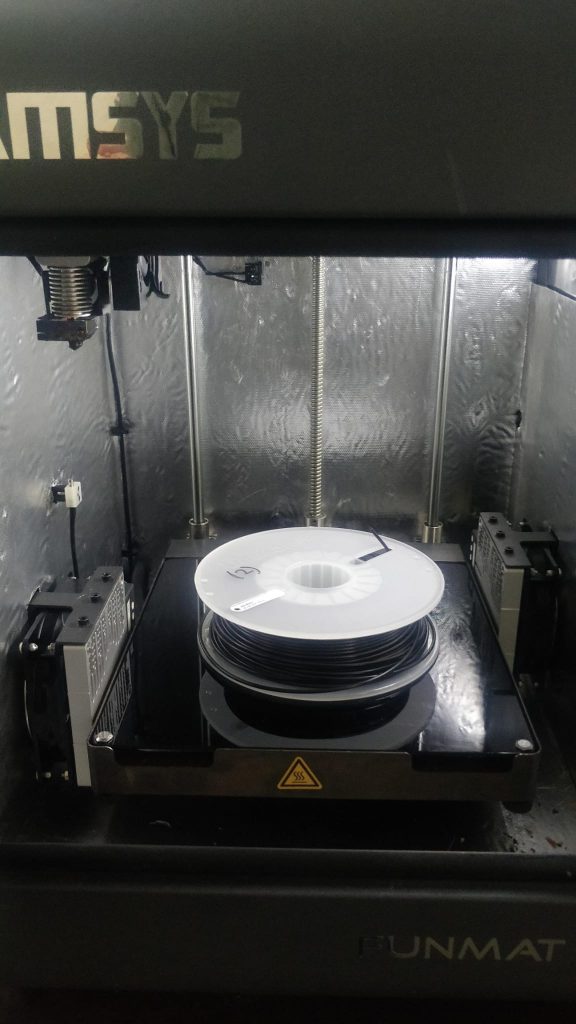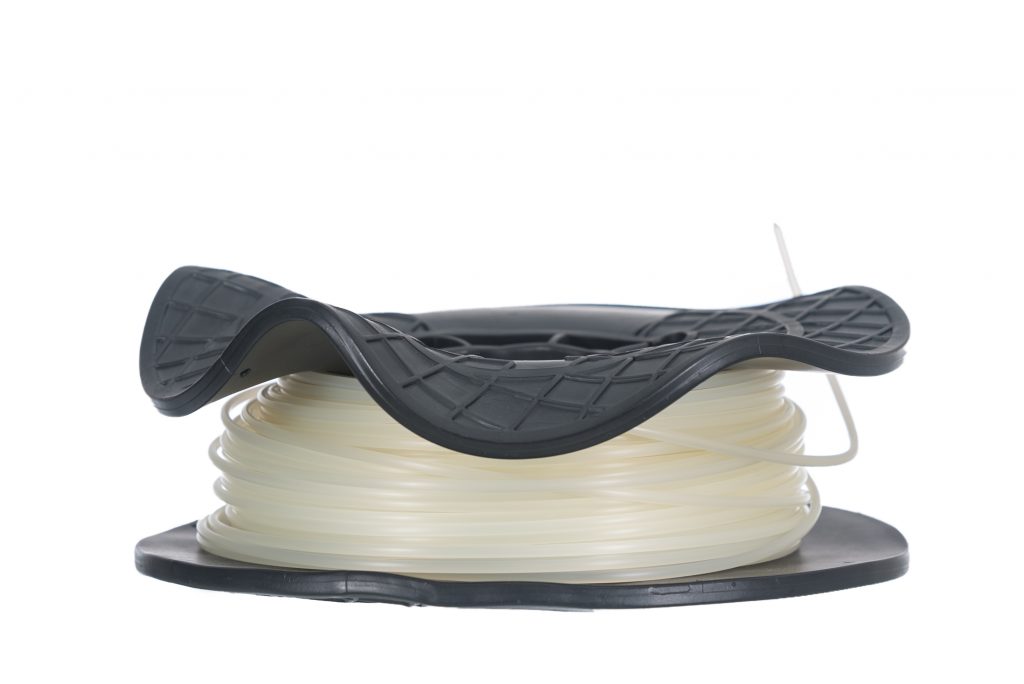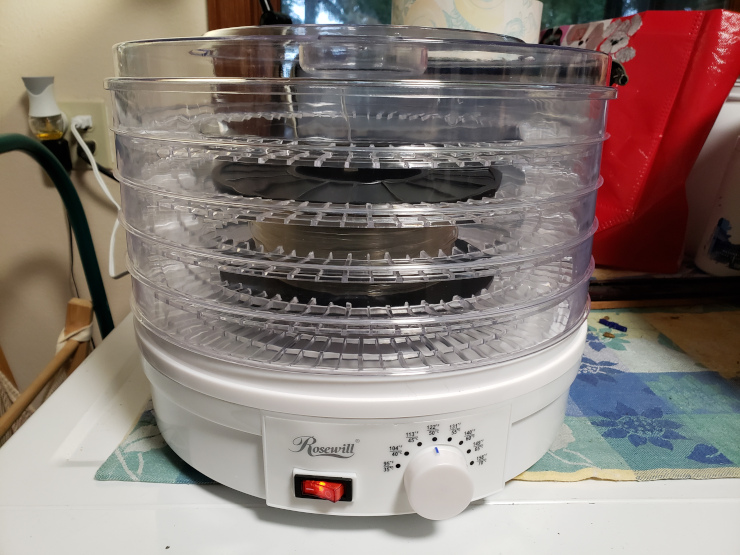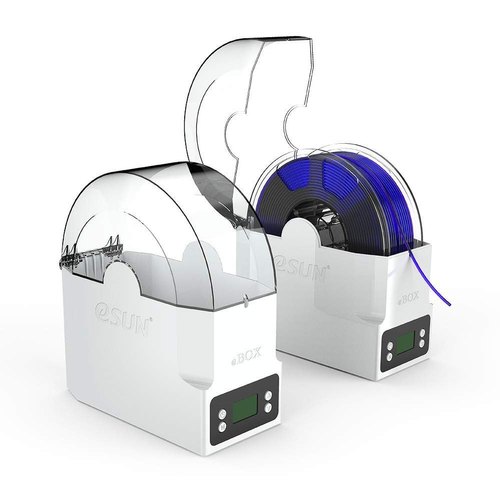Moisture and 3D Printing – Part 3 – Drying Filaments
In the past two blogs in this series we have discussed what moisture is in regards to polymers, and how this affects 3D Printing filaments and printed parts. In this third blog post in the series, we will be delving into the methods to counteract such moisture, specifically drying filaments. If done right, drying can make moisture filled filaments viable for printing again.
Before we explain what drying is, let’s make a quick recap on what moisture in polymers is! When filaments absorb water from the air, the water molecules bind themselves to the polymeric chains in the filament. The water molecules essentially disrupt the polymer chains from behaving as they are meant to. In the case of 3D Printing, this presents the defects we have seen in the previous blog post.
What is Drying?
Drying is the process of removing water molecules from the polymer chains. There are a number of ways that water can be removed from filaments, and these will be explained in the next section. Drying can be quite simple and cheap to do, if you have the right environment and parameters. Most drying techniques involve heating the filament to a temperature below the Glass Transition Temperature. The heat excites the water molecules that have bound to the polymer and allows them to move freely and diffuse to the surface. It is important that the Glass Transition Temperature is not exceeded, as this could irreparably damage the filament. The temperatures that each material is best dried at can be seen in the table below.
| Material | Temperature | Time |
| PLA | 50 °C | 4h |
| ABS | 65 °C | 4h |
| Nylons | 70 °C | 8h |
| PC | 60 °C | 8h |
Methods of Drying Filaments
There are various methods and tools that one can use to dry their filaments, and they vary in effectiveness, reliability and cost. We will now go through some of the most used drying techniques and mention their pros and cons in regards to cost, reliability and how well they dry filament.
Using a Printer’s Build-Plate
One way to dry filaments easily is by using a heated build plate of an enclosed 3D printer. By letting the spooled filament rest on the hot build plate for as long as the material requires, this is a cheap way of drying a moisture imbued filament. If the 3D printer allows for a heated chamber, this should be switched on and set to the same temperature that the build plate would be. While this does dry the filament in some cases, this method has a couple of disadvantages. Firstly, when using this technique you cannot use your printer it for printing. Furthermore since most printers can only heat the build-plate, the filament will probably not be heated and dried evenly.

Using an Oven
One of the most used techniques, especially for DIY hobbyists and small companies, an oven is a simple, easy way to dry your filaments. Using an oven requires you to preheat it to the specific temperature that you want to dry your filament in. It is important that you monitor the oven with a temperature probe inside the oven. This is because ovens have a tendency to overshoot the temperature the first time that it is heating up. The fan assist feature on ovens aids the drying and improves heat distribution. Once the oven has heated to the right temperature, the filament spool can be placed in the oven. When the time is up and you are ready to remove the filament from the oven, the best practice is to first switch it off and leave the filament to cool down slowly in the oven.
One disadvantage that ovens present when drying filaments is that their internal temperature is typically inconsistent and can overshoot. When the temperature gets too high, it might cause the filament spool to deform.

Food Dehydrators
Food Dehydrators are tools used for drying fruits and food. They can be used within limits to dry certain filaments. The premise is similar to that of using an oven to dry filaments. While they are slightly better suited for drying some filament since they work at lower temperatures than typical ovens, they might not be capable of getting hot enough to dry certain polymers such as Nylons. This paired with the fact that they are not specifically designed for drying filaments, means that they might not actually be very effective filament dryers. Most food dehydrators will also need modifications be able to accommodate filaments inside.

Source : bluepapertech.com
Filament Dryers
Filament dryers are machines that are meant for filament drying. Most of the times, they are specifically designed for that purpose. Sometimes, they are adapted from other machines, such as the food dehydrators mentioned earlier. They come in all shapes and sizes but typically all involve some dial or touch screen, to set the temperature and a space for the filament spool to fit in. There are various types of dryers which use different methods to dry the filament. Some dryers work alongside the printer, allowing the filament to enter and be used in the printer as it is drying. Filament dryers can offer a more reliable and tailored drying experience.
Source: esun3d.net
So what’s the best solution?
As can be seen above, there are various machines and techniques to get rid of moisture and in turn, dry filaments. While all these machines can be used for drying, they each have their limitations and drawbacks. Firstly the dryers mentioned above do not only dry the amount of filament that you need for any given print, but also the rest of the spool. The multiple heat and cool cycles that the filament will go through throughout the lifecycle of the spool is detrimental to the material. Another issue with these machines is the fact that you need to have these running and drying for at least 4-8 hours before you load the filament into the printer.
